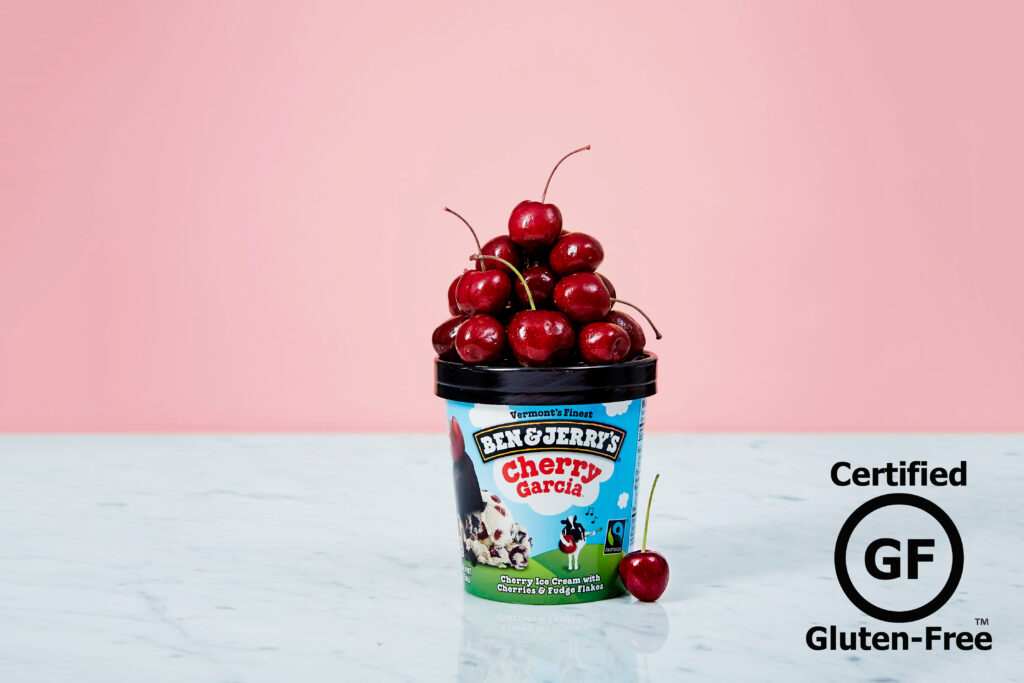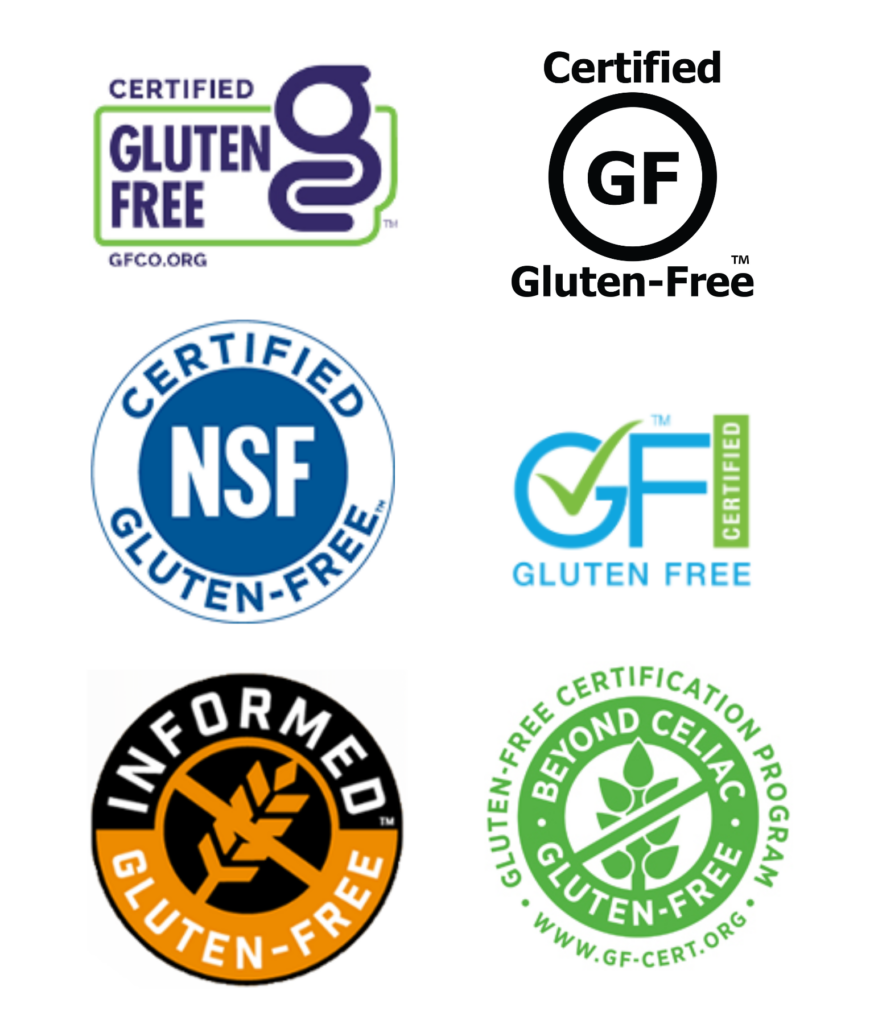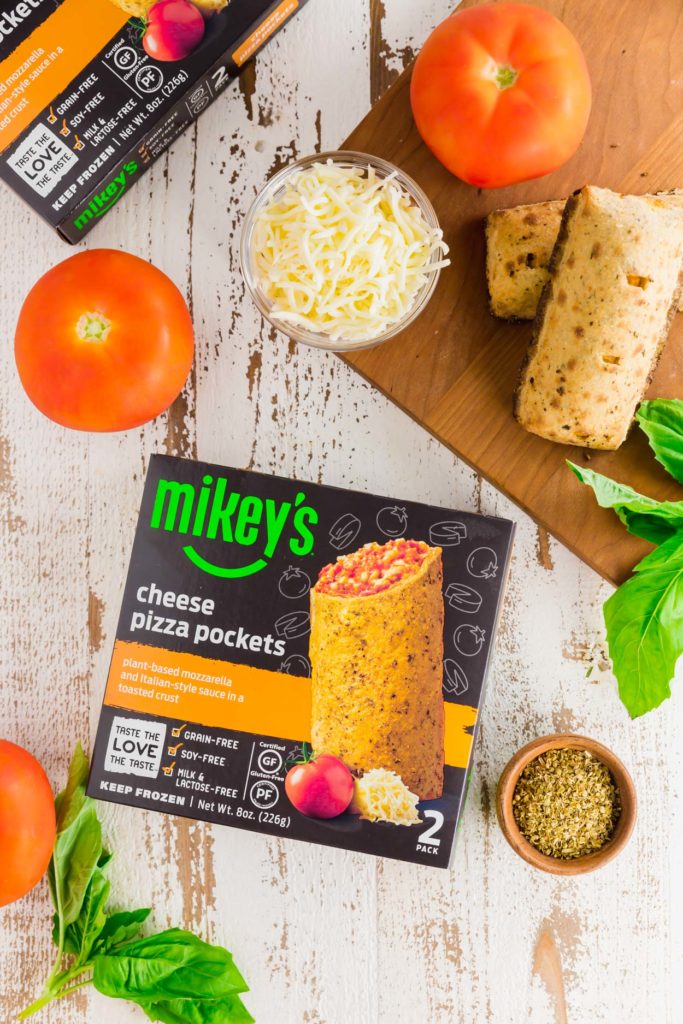
If you’ve been in the gluten-free community for a while, you’ve probably come across a product label that displays a “certified gluten-free” logo but also says “made on shared equipment with wheat.”
This is precisely what happened when I noticed the Jovial Vegan Mac was made on shared equipment. (Dont’ worry, Jovial Mac is completely safe and certified gluten-free.)
I’ve since found plenty of companies using shared equipment to produce certified gluten-free products, including Ben & Jerry’s, Pamela’s, Mikey’s, and Unreal Snacks, to name a few.
You may have wondered how a certified gluten-free product could be made on shared equipment and whether or not these products are safe for people with celiac disease and gluten intolerance.
In this article, I discuss what the certified gluten-free claim really means (and what it doesn’t mean) to help you navigate the complex and sometimes contradictory world of gluten-free labeling.
As always, one of the most important skills you can master as a gluten-free ninja is label reading. Read What Gluten-Free Labeling Laws and Certifications Really Mean to get up to speed on the latest gluten-free labeling laws and guidelines.

Recap of FDA Gluten-Free Guidelines
Before I discuss how a product can be certified gluten-free but made on shared equipment, I want to recap what the FDA guidelines say.
The FDA says a manufacturer can make a gluten-free claim on a product label if the product contains no ingredients with gluten (wheat, rye, barley, and derivatives of these grains) AND contains less than 20 parts per million (ppm) of gluten.
The one exception to the rule is that a product can contain wheat, but only if it has been processed to remove the gluten and the final product contains less than 20 ppm of gluten. (Read: Wheat-Free vs. Gluten-Free: What’s the Difference?)
It’s important to note a few nuances about the FDA’s gluten-free guidelines.
- Claiming a product is “gluten-free” is voluntary. This means a product can still be “gluten-free” but not labeled.
- The FDA does not include oats as a source of gluten, even though oats are highly contaminated with wheat. (Read: Are Oats Gluten Free? Unpacking Confusing and Contradictory Information.)
- The FDA doesn’t require manufacturers to test their final product before making a gluten-free claim. Instead, the FDA leaves it up to manufacturers to decide how they want to ensure their product meets the guidelines.
An NSF study found that nearly half of Americans think a “gluten-free” claim on a label means the product has been verified as gluten-free. However, it bears repeating that the FDA does not require manufacturers to prove their products are gluten-free (via lab testing) before making a “gluten-free” claim.
One legal disclosure manufacturers must make is that they must disclose if a product contains wheat.
The Food Allergen Labeling and Consumer Protection Act of 2004 (FALCPA) requires companies to disclose if a product contains any of the top eight allergens – wheat, soy, dairy, peanuts, tree nuts, shellfish, fish, and eggs.
Wheat is the only one of the top allergens that could contain gluten; however, barley and rye also contain gluten, but FALCPA doesn’t require manufacturers to disclose barley and rye on an ingredient label.
What “Certified Gluten-Free” Means
Many consumers say the FDA’s gluten-free guidelines don’t go far enough to protect consumers, especially given that manufacturers don’t have to test their products to ensure they contain less than 20 ppm of gluten before they slap on a “gluten-free” label.
Today, many gluten-free manufacturers turn to third-party agencies, like the GFCO, GFFP, and NSF, to earn the right to display a “certified gluten-free” logo on their product’s packaging.

In 2022, the GFCO said it experienced “unprecedented consumer demand” for its certification, noting that it certified 9,300 products from more than 800 brands during the year. The GFCO says it has certified nearly 160,000 products since its inception in 2005.
A “certified gluten-free” logo on a product offers many benefits, including:
- Consumers perceive certified gluten-free products as safe and trustworthy. It instills immediate goodwill in a brand.
- Certification adds a valuable endorsement of a product by a trusted organization. For example, the Gluten-Free Food Program is endorsed by The National Celiac Association, and the GFCO is owned by the Gluten Intolerance Group.
- It distinguishes a product at the point of sale, which boosts likely sales and ROI.
- It offers manufacturers safe and reliable guidelines when producing gluten-free foods, reducing the possibility of product recalls, dissatisfied customers, and lawsuits.
The guidelines vary among certifying organizations, but all require stricter guidelines than those set forth by the FDA.
To be certified gluten-free, a manufacturer must do the following:
(1) Prevent Cross-Contamination:
A manufacturer must implement strict measures to prevent cross-contamination, which includes sanitizing all equipment between uses. Remember, a product can be certified gluten-free and manufactured on shared equipment—more on that next.
(2) Use Only Gluten-Free Ingredients:
The manufacturer must verify that all its raw ingredients are gluten-free before use.
(3) Undergo Annual Plant Audits:
Any plant manufacturing certified gluten-free foods must undergo rigorous annual plant audits and prove they strictly adhere to the certifying agency’s policies and procedures.
(4) Test the Final Product:
Manufacturers must test their final products to ensure they contain less than 20 ppm of gluten. Most agencies require that products contain lower levels of gluten than the FDA requires.
For example, the GFCO says a product can contain no more than ten ppm of gluten. The NSF requires a product test at or below 15 ppm. And the Gluten-Free Food Program (GFFP) reserves its certification for products that test at five ppm or less.
(5) Pay a Fee:
The cost of a gluten-free certification can vary depending on the certifying agency. However, it’s important to note that the GFCO, GFFP, and NSF are non-profits or endorsed by non-profits.
Jeanne Reid, marketing manager for the GFCO, says the GFCO tries to keep fees “affordable,” and there is no one set fee for certification. She also says that GFCO fees are not based on the number of products or SKUs.
Instead, the costs vary based on the size of the company, the risk level of the ingredients, and the number of manufacturing locations.
It can cost a small to mid-size business producing low to medium-risk products about $2,000-$4,000 per year, she says. The fees are shared publically on the GFCO website.
According to Allen Rekunyk, VP of Certification Programs for the GFFP, annual certification costs $750 for one product, $950 for 2-4 products, and $1,250 for 5-6 products + $50 per product over six products.
What “Certified Gluten-Free” DOESN’T Mean
One misconception about certified gluten-free products is that they must be made on dedicated gluten-free equipment. While some certified gluten-free products are made on dedicated equipment, like Jovial’s pasta and Bob’s Red Mill’s gluten-free flours, many are not.
Few manufacturing facilities offer dedicated equipment, and it’s expensive for smaller brands to make their own equipment. This is why companies have to use shared-but-sanitized equipment to make certified gluten-free foods.
Mikey’s makes frozen pizza pockets that are certified gluten-free by the GFCO. The company makes its pockets on shared equipment, but says all the equipment is sanitized and swabbed for gluten before a production run.

The company writes on its website that the swabs are deliberately taken in areas that are more difficult to clean, such as curved corners. If the gluten swab returns positive, the equipment is sanitized and tested again. Production cannot begin until the test comes back negative for gluten.
Mikey’s also says it sends its finished product samples to a third-party laboratory to be tested to ensure that gluten levels are below 20 ppm. All products are held at the production facility until the results are satisfactory.
Not all companies are as transparent as Mikey’s, and many foods made on shared equipment with wheat do not disclose that they use shared equipment, making it hard to know which brands use dedicated vs. shared equipment.
If a product is certified gluten-free but also says “made on shared equipment,” it means the product has met all the stringent guidelines set forth by the certifying agency, but it’s also disclosing, per FALCPA, that there’s a slight possibility the product could contain wheat.
This disclosure is helpful to people who are severely allergic to wheat, but is not a major cause for concern among those with celiac disease and gluten intolerance. People with celiac disease and gluten intolerance can and should feel confident eating certified gluten-free foods.
Limiting all packaged foods is an unnecessary restriction and can lead to disordered eating and a more difficult life. (Read: Can You Be Too Gluten-Free? How to Balance Dietary Vigilance Without Losing Your Mind.)
Thank you for this article!